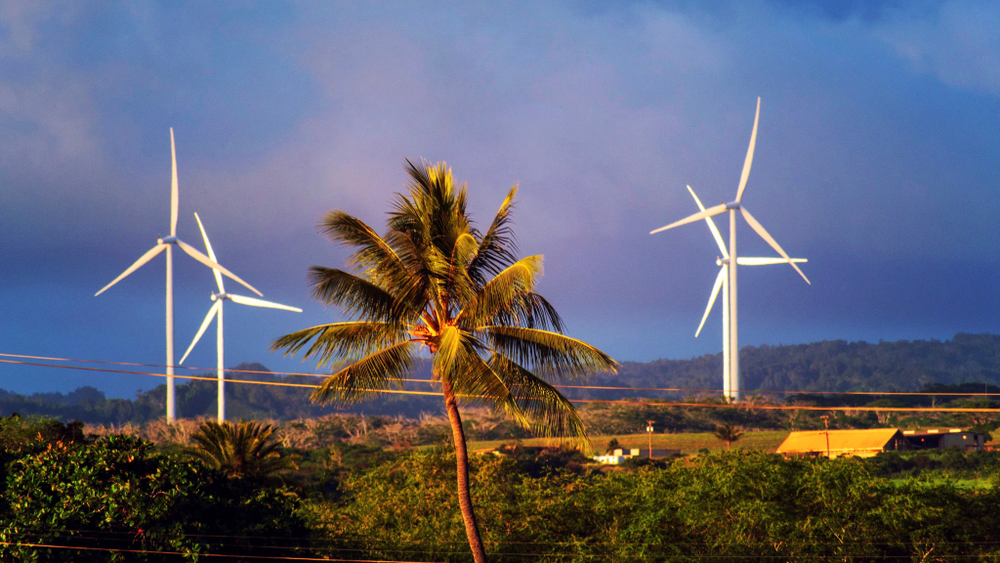Hawaiian Electric reached 28 percent renewable energy in 2019

Hawaiian Electric said Wednesday that it achieved a 28.4 percent consolidated renewable portfolio standard in 2019, despite lower wind energy production and Hawaii Island’s geothermal resource being unavailable.
The company is aiming to reach 100 percent renewable energy by 2045.
Due to the effect of the 2018 Kilauea eruption, the Puna Geothermal Venture (PGV) did not operate normally in 2019, Hawaiian Electric said. If it had operated normally, it would have added approximately 3.7 percentage points to the consolidated RPS, according to the company. The additional generation from the PGV would have enabled the company to exceed the state mandate of 30 percent RPS by the end of 2020, which Hawaiian Electric said it expects to reach this year.
Hawaiian Electric also noted that wind energy production decreased by 13 percent, or 527,887 megawatt-hours, in 2019. Record-high temperatures also increased electricity demand, the company said, which reduced the RPS.
Maui County achieved 41 percent RPS in 2019, an increase from 38 percent in 2018. Oahu reached 25 percent, an increase from 22 percent the previous year. Hawaii Island recorded 35 percent, a decrease from 44 percent in 2018. If PGV had operated normally in 2019, Hawaii Island would have reached an estimated 65 percent RPS, according to Hawaiian Electric.
The company noted that three Clearway Energy solar facilities, two in Central Oahu and one on the North Shore, which total 110 megawatts (MW), began commercial operation in September and November, respectively. The 20-MW West Loch Solar Project in Ewa began operation in November.
Electrical energy from renewable energy resources, including customer-sited, grid-connected resources, increased by 6.7 percent, or 156,064 megawatt-hours, in 2019, the company said.
